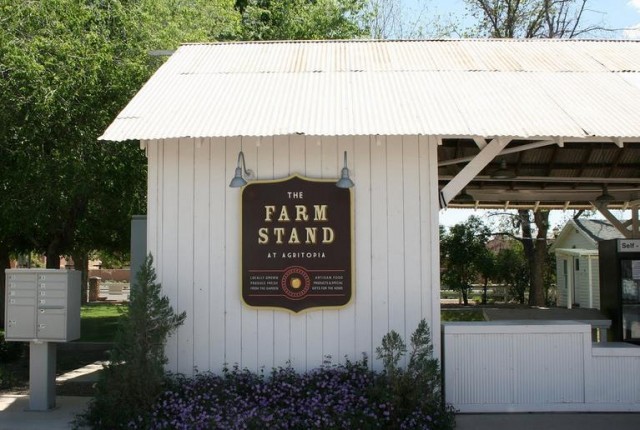Living in Agritopia

In the Times, Kate Murphy looks at the Agritopia neighborhood in Gilbert, Ariz. Agritopia is just one of so-called “agrihoods” — communities built around a working farm.
Sixteen of Agritopia’s 160 acres are certified organic farmland, with row crops (artichokes to zucchini), fruit trees (citrus, nectarine, peach, apple, olive and date) and livestock (chickens and sheep). Fences gripped by grapevines and blackberry bushes separate the farm from the community’s 452 single-family homes, each with a wide front porch and sidewalks close enough to encourage conversation. A 117-unit assisted- and independent-living center is set to open this summer.
The hub of neighborhood life is a small square overlooking the farm, with a coffeehouse, farm-to-table restaurant and honor-system farm stand. The square is also where residents line up on Wednesday evenings to claim their bulging boxes of just-harvested produce, eggs and honey, which come with a $100-a-month membership in the community-supported agriculture, or C.S.A., program. Neighbors trade recipes and gossip, and on the way home can pick up dinner from one of a few food trucks stocked by the farm.
“Wednesday is the highlight of my week,” said Ben Wyffels, an engineer for Intel who moved here with his wife and two sons two years ago from another Phoenix suburb, attracted by the farm and the community’s cohesiveness. “To be able to walk down the street with my kids and get fresh, healthy food is amazing,” he said, and has helped steer his family toward kale and carrots and away from chicken nuggets and hot dogs.
I am also attracted to this idea, mostly because like many of the residents of Agritopia, I have envisioned myself living and working on a farm (even if the reality of actually doing so is much harder than it sounds).
Joseph E. Johnston, the developer and a resident of Agritopia describes to the Times how hard it was to make the community a success. Unlike commodity farmers that grow a few crops to sell, community farmers must grow a variety of highly perishable crops to sell to residents, and then figure out what to do with the excess (Johnston sells at farmers’ markets and directly to chefs of local restaurants).
Lots of residents have flocked to the neighborhood for the “farm-to-table” lifestyle without all the work that goes into it. Says one resident, “For me, the serious downside of farming is doing it on your own means, doing it 365 days a year. But in this scheme we will have a farm without all the responsibility.”
Photo: Adam Charlton
Support The Billfold
The Billfold continues to exist thanks to support from our readers. Help us continue to do our work by making a monthly pledge on Patreon or a one-time-only contribution through PayPal.
Comments